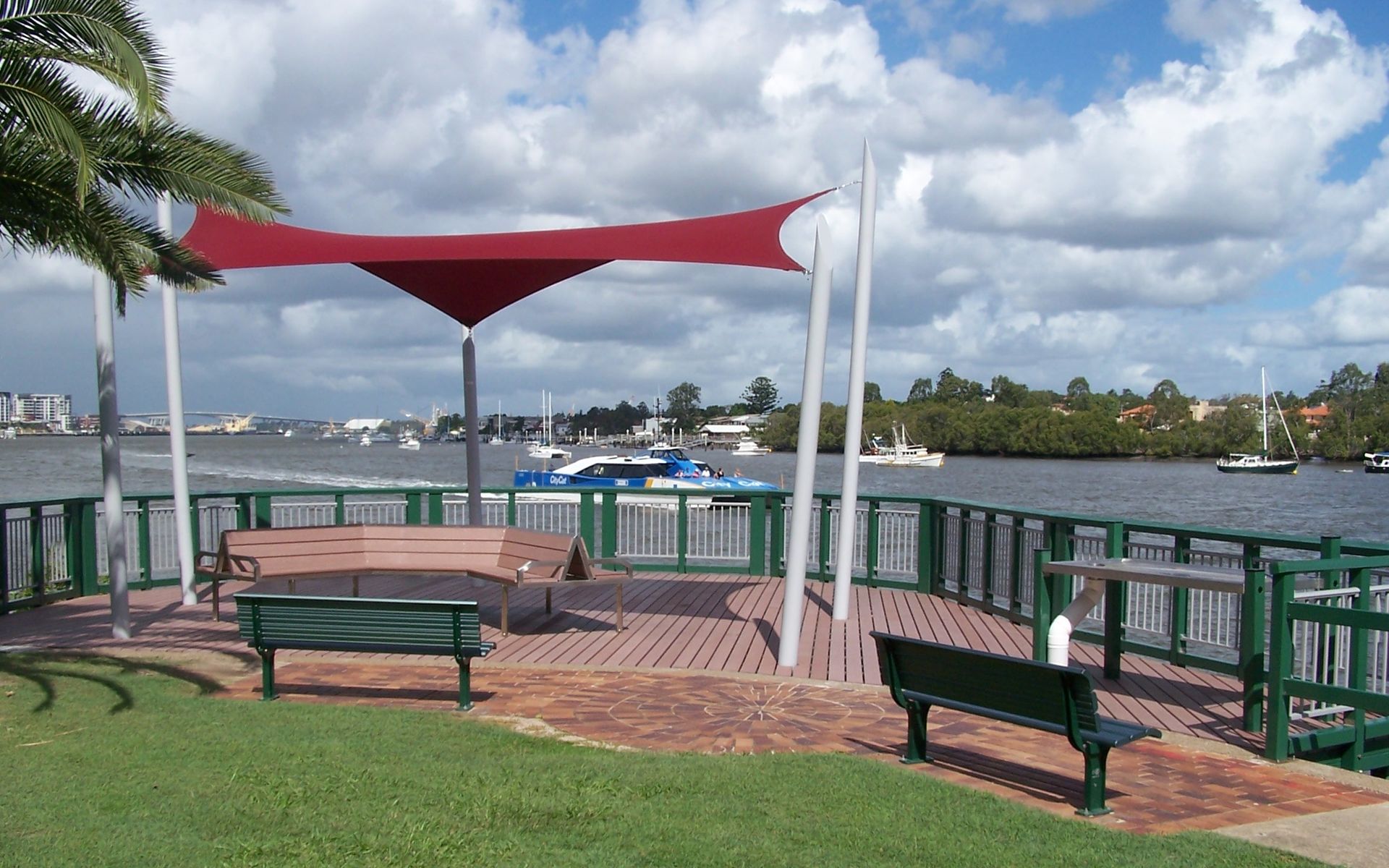News
News
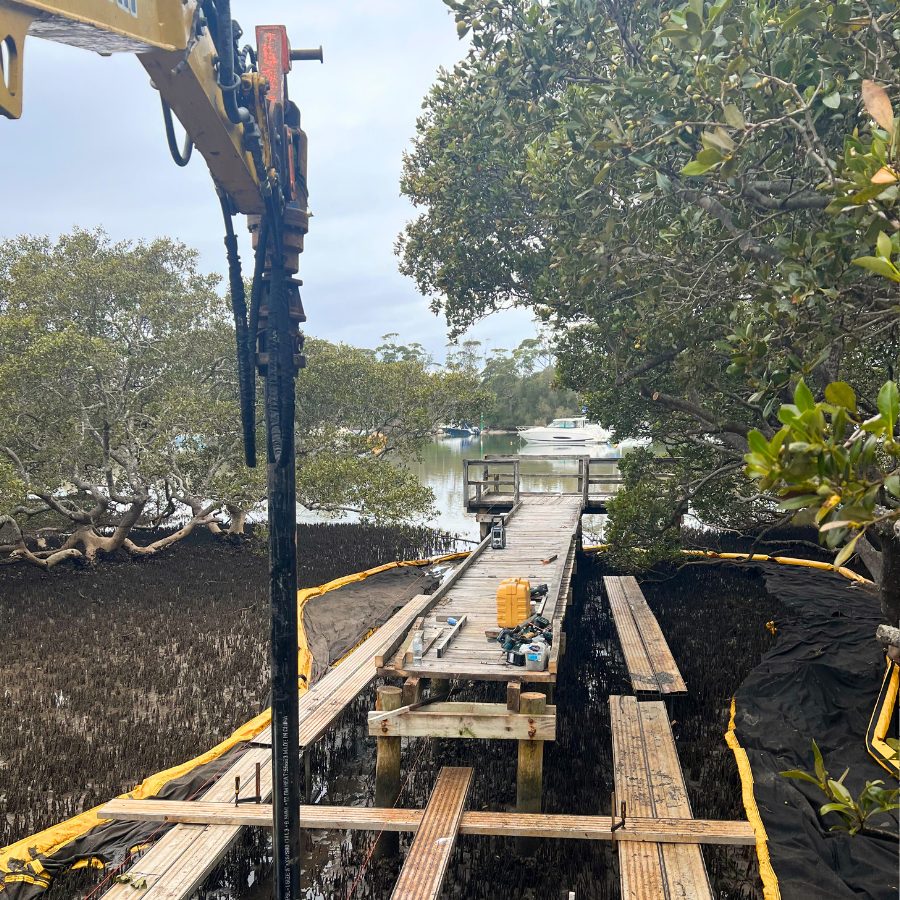
by Kellie Stewart
•
26 Apr, 2024
Upgrading an old timber boardwalk in an ecologically important mangrove forest that is home to several threatened species and feeds into an internationally recognised marine park is no mean feat! But it’s a challenge like this that New South Wales based Aboriginal civil construction company ALI Civil love to take on and pride themselves on successfully delivering. Director Cohen Jirgens said Huskisson Mangrove Boardwalk had reached the end of its useful life but its replacement posed significant challenges to the sensitive environment in which it sat. “The Huskisson Mangrove Boardwalk is located in the Jervis Bay Marine Park in New South Wales Australia and was originally constructed in 1991; and at that time it was 300 metres long and constructed from treated soft and hard woods,” Cohen Jirgens said. “Actually one of the original members of the construction team provided us with some details of the original build including the total cost which was $37,000 for both labour and materials; that works out to be $123 dollars a lineal metre which is totally inconceivable today,” Mr Jirgens said. “Since its construction in 1991, the boardwalk has been a major drawcard for the community of Huskisson attracting tens of thousands of people to gently meander through the established mangrove forest on the tidal mudflat of Currambene Creek,” he said. “And when the tide floods in, the mangroves come to life with bream, mullet, blackfish, whiting, crabs, stingrays and birds like the white-faced heron, oystercatchers, Eastern curlews and many more coming in to feed on the flooded mangrove forest.”
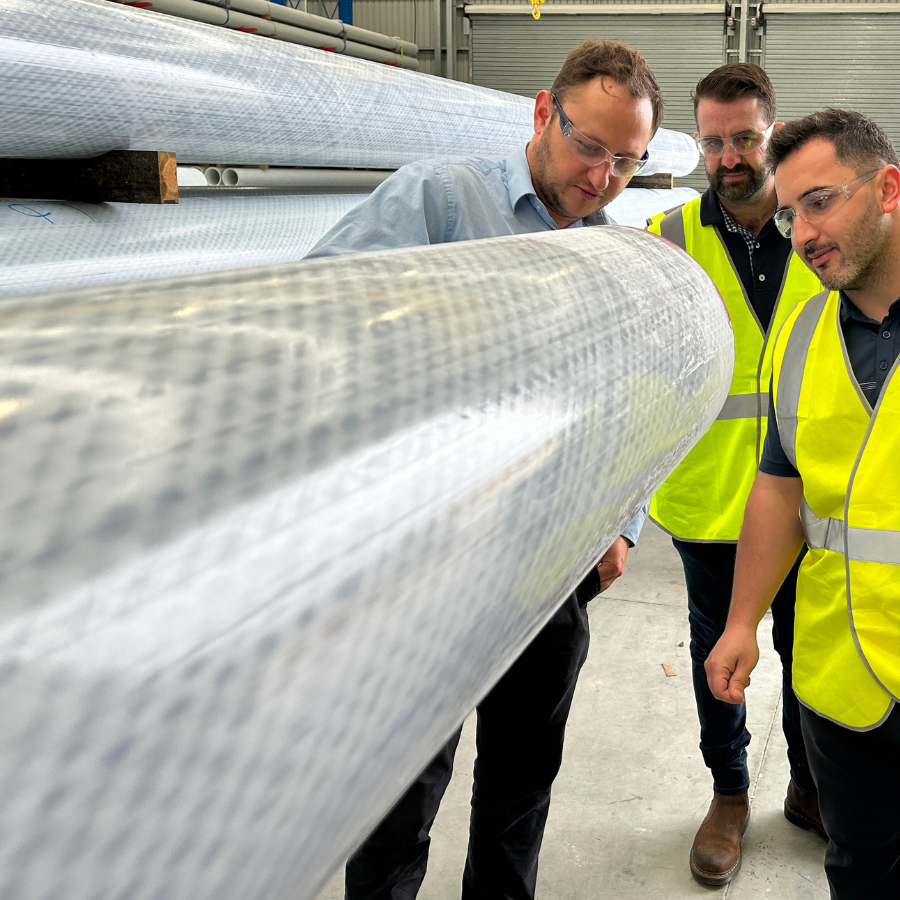
by Kellie Stewart
•
03 Apr, 2024
Network operators around Australia are breathing a sigh of relief with the launch of Wagners Composite Fibre Technologies' (CFT) new 356mm Fibre Reinforced Polymer (FRP) utility pole. Its launch comes in the wake of rising costs, declining quality and reliability of supply for traditional timber utility poles, due to ‘deforestation and bushfires in 2002 and 2003 which caused large scale destruction of thousands of hectares of hardwood forests.’* Wagners CFT National Product Specialist - Utilities, James Lorrimer said the new 356mm FRP utility pole is the solution for networks that are finding it near impossible to source larger capacity timber utility poles. “Wagners CFT has worked really hard to expedite the launch of its 356mm utility pole in answer to the call from network operators to find a solution, and quick!,” James Lorrimer said. “The 356 compliments our already existing range of 301mm and 293mm of which we’ve seen some 6,000 poles head out to networks in the past 12 months, thereby taking the pressure off hardwood timber resources for those lighter loads and heights,” Mr Lorrimer said. “But it’s been those bigger loads, bigger capacities where the real need has been and now with the launch of Wagner’s new 356 FRP utility pole, we can offer customers standard service loads to 14m/8kN and 15.5m/5-6kN,” he said. “And with different networks requiring different configurations, just like our 301s and 293s, the new 356s can be custom designed to suit the set up and standard configuration of each network.”
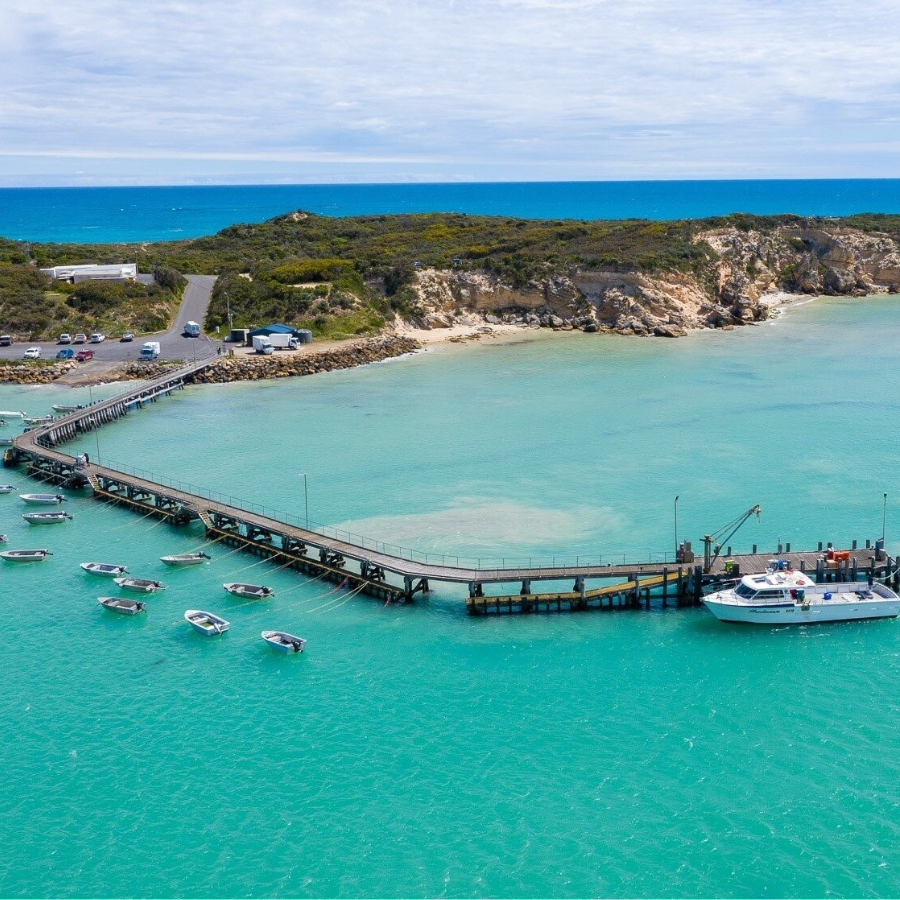
by Kellie Stewart
•
03 Apr, 2024
Declining quality, rising prices and shortages of hardwood timber has led to major repair works being completed with modern composite materials at Southend Jetty in South Australia. The jetty, located on the Limestone Coast near Beachport, is managed by the Department for Infrastructure and Transport (DIT) and is home to a significant rock lobster fleet. DIT Manager of Marine Assets Spiros Dimas said Southend Jetty was built a long time ago, predominantly from timber and designed in an ‘L’ shape to get out to the deep water. “Southend Jetty has been there since about the 60’s or 70’s and like all of the historic jetties in this area it is well designed, constructed from quality timber and because South Australia doesn’t have the beauty of deep harbours, was designed to chase the deep water allowing clippers and ships to drop off and pick up cargo,” Spiros Dimas said. “All of these jetties are historical structures that have stood the test of time; some were even designed to take heavy industrial steam trains,” Mr Dimas said. “But the tide has turned and we can’t depend or rely on timber for the repair of these jetties anymore because the quality is just not there, we don’t have the funding and even if we did, demand is so high we just can’t get our hands on the stock we need,” he said. “Composite plastic is a solution for us.”
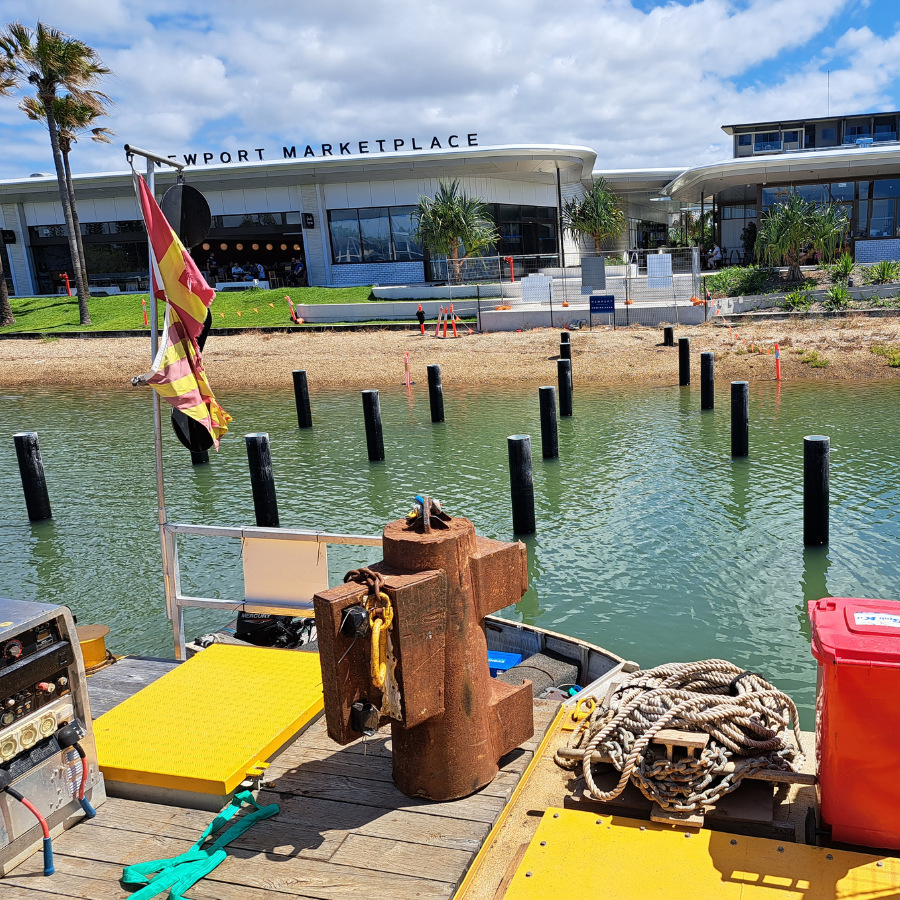
by Kellie Stewart
•
07 Mar, 2024
Waterfront moorings for sports yachts and cruisers of the Gold Coast glitterstocracy are set to be revolutionised with a new state of the art marine pile designed to reduce impact on berthing yachts. Wagners Composite Fibre Technologies (CFT) have designed and manufactured the new Trident Marine Pile from pultruded Fibre Reinforced Polymer (FRP) and coated with a High Density Poly Ethylene (HDPE) outer sleeve. Global Business Development Lead Michael Kemp said the natural modulus of elasticity, characteristic of FRP, allowed design engineers to develop a product that was strong and robust enough to withstand the marine environment, but giving enough to yield if a shipmaster came into dock too fast. “Wagners’ 301 Trident Marine Piles bring all the benefits of high strength composites but have a lower stiffness than steel so they do flex more than their steel, or concrete counterparts,” Michael Kemp said. “This makes them the perfect solution for the discerning skipper who has invested in a quality sports yacht or cruiser and wants to reduce impact on the vessel at docking,” Mr Kemp said. “In fact, the Wagners Trident Marine Piles have the same stiffness as equivalent sized timber piles, whilst being a fraction of the weight, giving all the benefits of timber piles with dramatically improved durability,” he said. “This technology will absolutely revolutionise marine structures, especially in that canal-river waterfront property setting; and because Wagners is an Australian owned and based manufacturer we’re ready to meet demand quickly.”
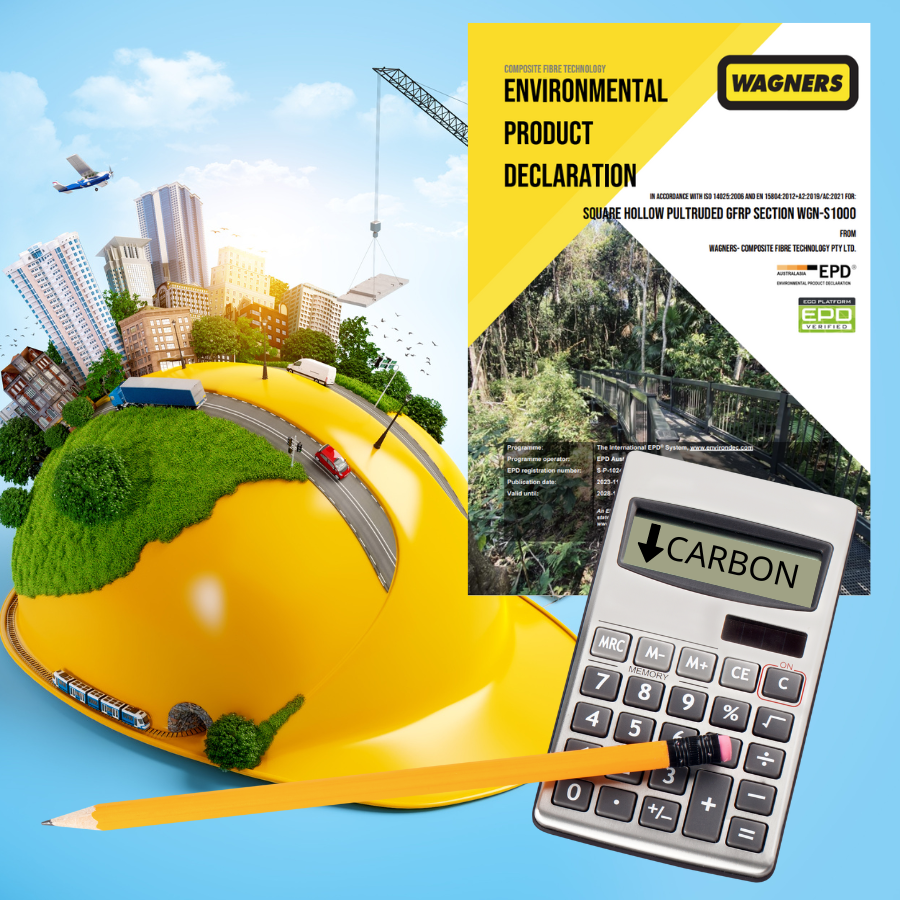
by Kellie Stewart
•
01 Feb, 2024
Quantifying reduced carbon emissions and meeting 2030 targets is now a reality for architects, engineers and asset owners choosing Wagners' Fibre Reinforced Polymer (FRP) profiles thanks to the businesses new Environmental Product Declaration (EPD). An EPD is a document which transparently communicates the environmental performance or impact of a product over its lifetime, and includes measurements like the global warming potential or eutrophication (water pollution) of a product to name but two. Wagners Composite Fibre Technologies (CFT) General Manager Australia New Zealand, Ryan Leeson said EPDs are third-party verified, internationally recognised and make it possible for consumers to compare the impact of different materials on the environment in order to select the most sustainable option for their project. “Wagners CFT has been a leader in the pultruded FRP industry for some 20-years now having been first in the world to build a road bridge using pultruded FRP structural profiles, first to design and install clip-on pedestrian walk and cycleways to existing bridge structures and the first to design and build the longest riveted FRP truss bridge in Australia, possibly the world,” Ryan Leeson said. “Now, Wagners CFT is amongst the leaders driving decarbonisation in construction with the launch of our new EPD; which is the first of its kind for pultruded FRP in Australia and only the second of its kind in the world,” Mr Leeson said. “This EPD is more than just a piece of paper, it is the roadmap our partners can use to decarbonise construction by giving them credible information about our products Life Cycle Assessment (LCA) which has been third-party verified and is internationally recognised; to determine the total environmental impact of infrastructure built out of Wagners’ FRP and compare that information to the same structure built out of other material like timber or steel,” he said. “Architects, engineers, designers and asset owners can then choose the product with the least environmental impact and calculate the reduction achieved in embodied carbon towards 2030 targets.”
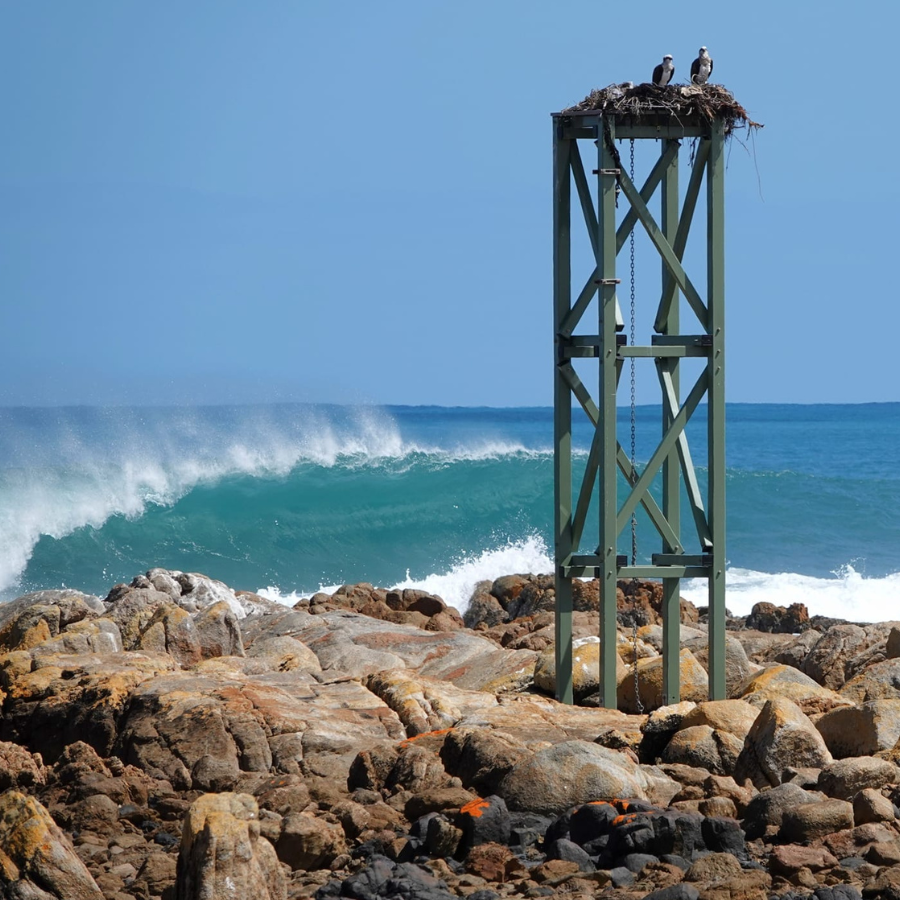
by Kellie Stewart
•
01 Feb, 2024
Rapidly declining eastern osprey numbers in South Australia have been arrested thanks to the construction and installation of raised artificial nest platforms; most constructed from Wagners Composite Fibre Technologies (CFT) Fibre Reinforced Polymer (FRP) structural profiles. Friends of Osprey South Australia spokesman Ian Falkenberg said populations of eastern osprey had been declining due to loss of breeding habitat, human disturbance and predation from fox and other animals during key breeding times as well as coastal development along traditional osprey nesting grounds. “Four years ago we had one breeding pair of eastern osprey on the mainland on Yorke Peninsula and that was largely due to the fact that there were no suitable sites to nest. Yorke Peninsula, unlike areas on the east coast, lacks tall trees or suitable cliff faces where the osprey can nest undisturbed,” Ian Falkenberg said. “The coast is very popular - housing, tourism, walking trails - and the birds have pushed out into suboptimal areas where they regularly fail to successfully breed and raise young; hence the reason why they are now threatened,” Mr Falkenberg said. “Secure and safe nesting sites are simply not available and birds are forced to select low limestone stacks to breed which are vulnerable to fox predation. But more importantly these sites are regularly disturbed by people accessing walking trails and camping along the coast and when disturbed the osprey are forced from the nest and while they are preoccupied defending their nests, crows and seagulls opportunistically swoop in and take the eggs or young,” he said. “The FRP raised artificial nest platforms are replacing the trees and high cliff faces that aren’t there and elevating the osprey nests and installing them in more secure and safe locations away from human disturbance and fox predation.”
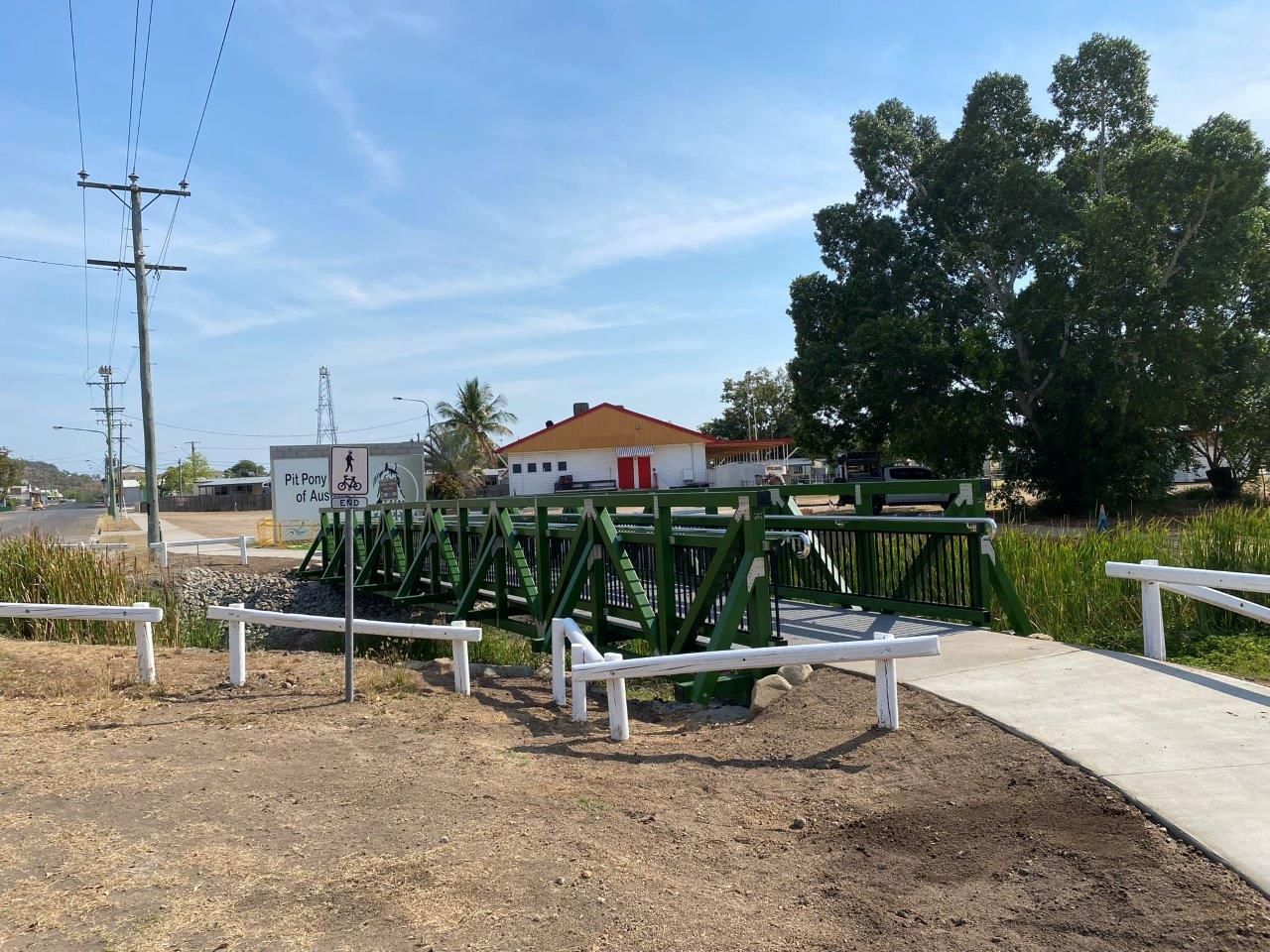
by Kellie Stewart
•
30 Nov, 2023
Thinking beyond what you’ve been told is achievable, and proving the impossible is actually possible was inducement enough for a group of engineers at Wagners Composite Fibre Technologies (CFT), to deliver the longest riveted Fibre Reinforced Polymer (FRP) truss bridge in Australia; possibly the world! At 18 metres long and 2 metres wide, the heritage green pedestrian bridge now sits unassumingly over an ephemeral creek west of Proserpine on the central Queensland coast; just down from the lawn bowls club on Scottsville Road in Collinsville. Wagners CFT Lead Structural Engineer Dr Ali Mohammed said for the tiny township of 1,200, the bridge’s installation was probably fairly uneventful for Collinsville; but for him and his colleagues the bridge represents pushing beyond the threshold of design limitations and challenging long-held beliefs and norms. “Breaking records is always unique and at 18 metres long the Scottsville Road pedestrian bridge in Collinsville is about 2 metres longer than any other riveted FRP truss bridge in Australia; possibly the world,” Dr Ali Mohammed said. “It was designed in house here at Wagners CFT by our design team and certified externally by Impact Structural Engineers,” Dr Mohammed said. “The bridge was pre-assembled at Wagners CFT in Wellcamp before being trucked some 1,100 kilometres up the Leichhardt Highway to Collinsville and craned into place ahead of final installation by local contractors PW Landscapes,” he said.
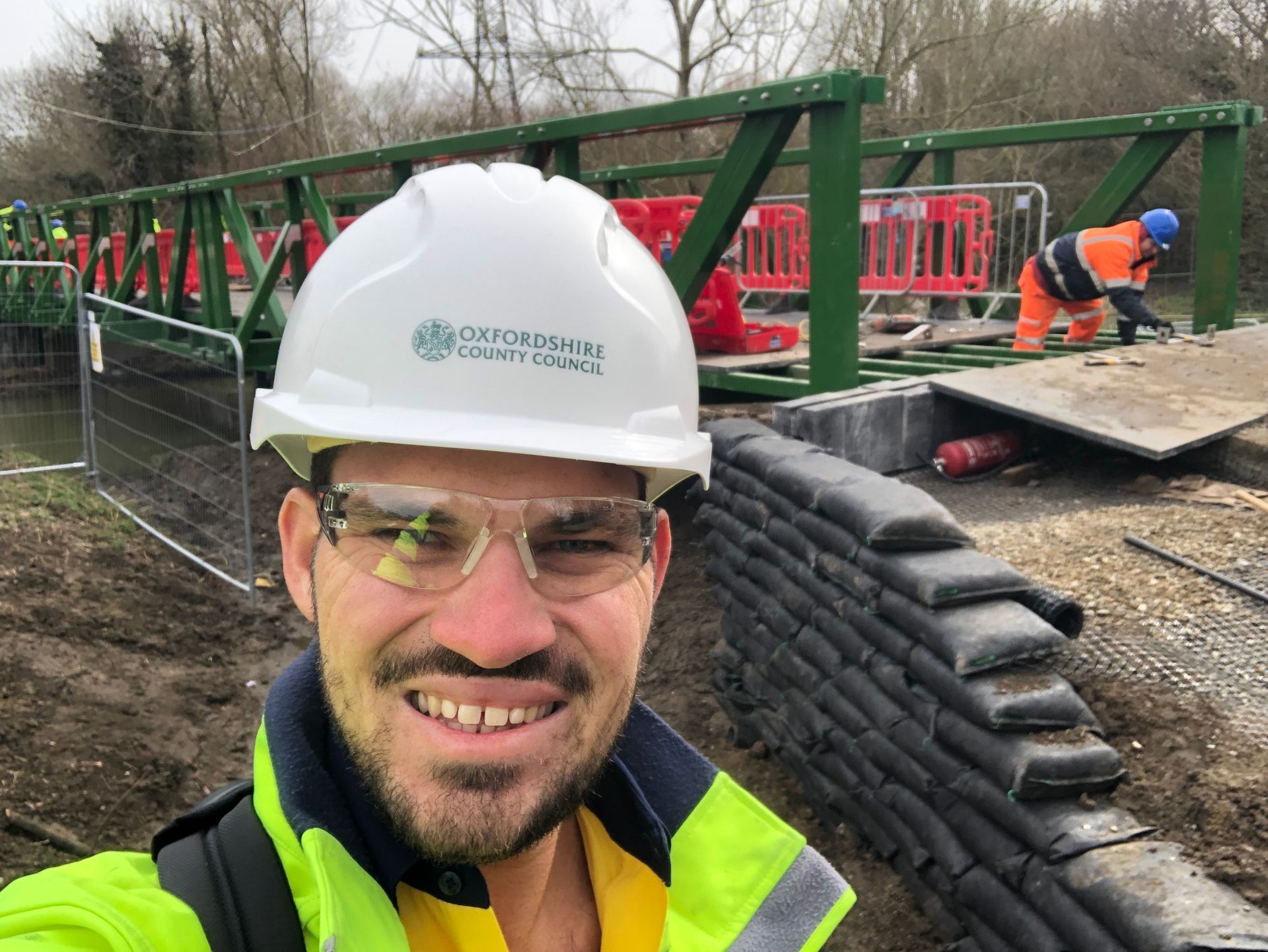
by Kellie Stewart
•
07 Nov, 2023
Diving into your first Fibre Reinforced Polymer (FRP) construction project can be daunting and for many contractors the great unknown or perceived risk of failure is just too much. But did you know Wagners Composite Fibre Technologies (CFT) has a core-group of travelling tradies that help contractors get that first FRP job under their belt?
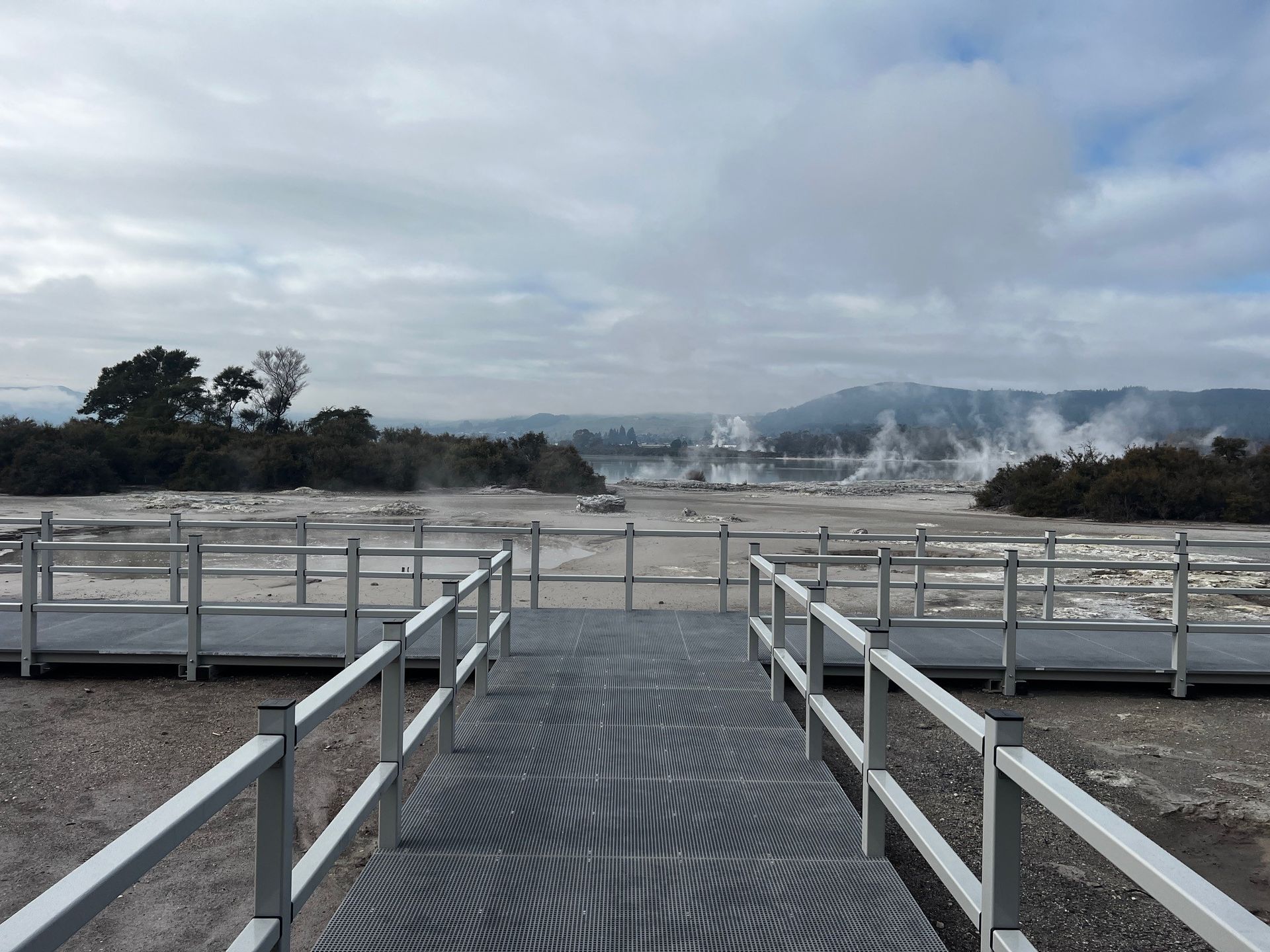
by Kellie Stewart
•
13 Oct, 2023
Rotorua is a geothermal wonderland of steaming lakes, hot springs, colourful sulphur formations, and bubbling mud located smack bang in the middle of the Taupo Volcanic Zone of New Zealand’s North Island. Needless to say for Rotorua Lakes Council maintaining pedestrian boardwalks and bridges in a volatile landscape like this has historically been challenging; requiring constant maintenance and replacement programs to maintain safe standards of access for the thousands of tourists, both domestic and international, who visit the area each year. Wagners Composite Fibre Technologies (CFT) Australia, New Zealand National Sales Manager, Mark Baker said Council not only needed a material solution which could withstand the heat and acidity of the geothermal landscape, but one that didn’t require foundations and was modular in design.
Subscribe to Wagners CFT monthly newsletter
Join the subscription list for Wagners CFT monthly newsletter and keep up to date on designing, constructing and working with Fibre Reinforced Polymer (FRP) profiles.
There'll be webinars, case studies, news stories and more to choose from each month and special offers and opportunties for newsletter subscribers only.
JOIN NOW at the button below.
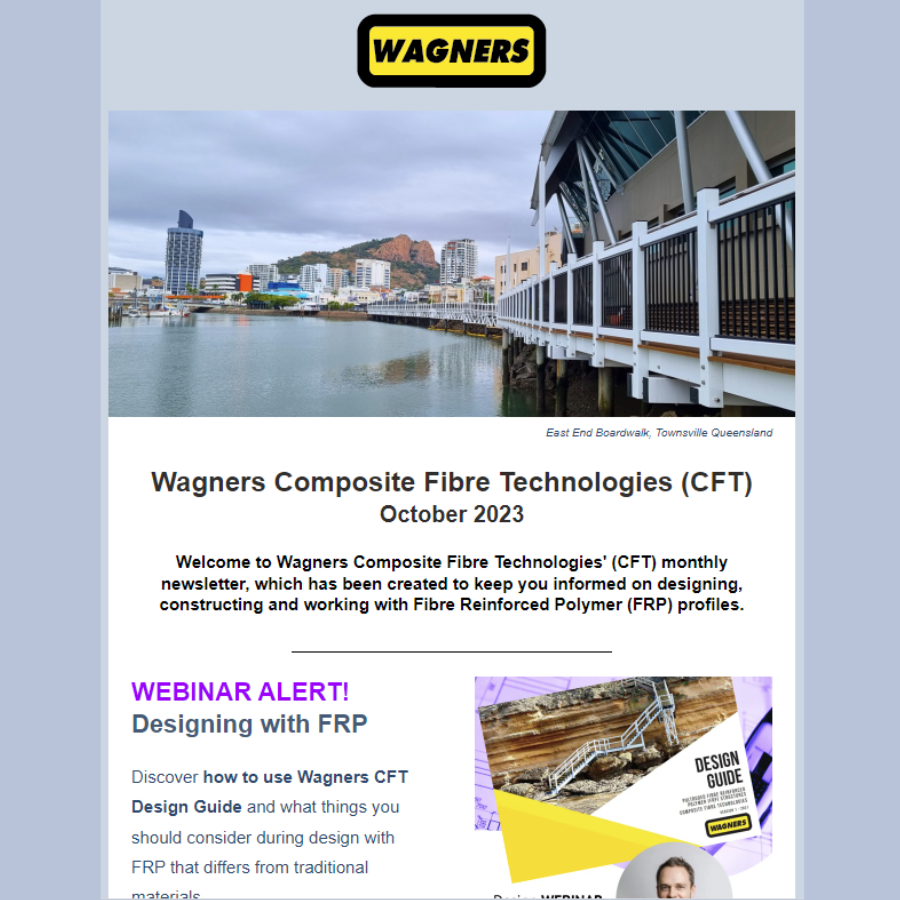
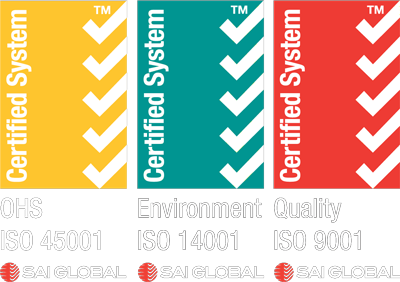
PRIVACY POLICY // © 2023 Wagners // indigo web + black canvas //

